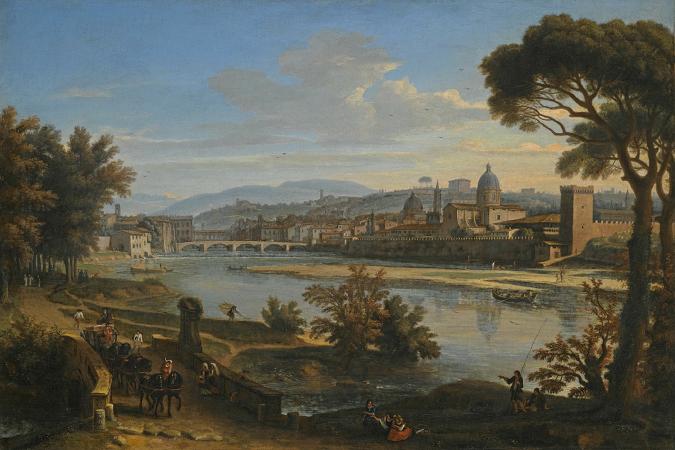Florence. Florence is a city in central Italy and the capital city of the Tuscany region. It is the most populous city in Tuscany, with 383,084 inhabitants in 2013, and over 1,520,000 in its metropolitan area. Florence was a centre of medieval European trade and finance and one of the wealthiest cities of that era. It is considered by many academics the birthplace of the Renaissance, and has been called the Athens of the Middle Ages. Its turbulent political history includes periods of rule by the powerful Medici family and numerous religious and republican revolutions. From 1865 to 1871 the city served as the capital of the Kingdom of Italy. The Florentine dialect forms the base of Standard Italian and it became the language of culture throughout Italy due to the prestige of the masterpieces by Dante Alighieri, Petrarch, Giovanni Boccaccio, Niccolò Machiavelli and Francesco Guicciardini. The city attracts millions of tourists each year, and UNESCO declared the Historic Centre of Florence a World Heritage Site in 1982. The city is noted for its culture, Renaissance art and architecture and monuments. The city also contains numerous museums and art galleries, such as the Uffizi Gallery and the Palazzo Pitti, and still exerts an influence in the fields of art, culture and politics. Due to Florence's artistic and architectural heritage, Forbes has ranked it as one of the most beautiful cities in the world. Florence plays an important role in Italian fashion, and is ranked in the top 15 fashion capitals of the world by Global Language Monitor; furthermore, it is a major national economic centre, as well as a tourist and industrial hub. In 2008 the city had the 17th-highest average income in Italy. Main articles: History of Florence and Timeline of Florence Florence originated as a Roman city, and later, after a long period as a flourishing trading and banking medieval commune, it was the birthplace of the Italian Renaissance. According to the Encyclopædia Britannica, it was politically, economically, and culturally one of the most important cities in Europe and the world from the 14th to 16th centuries. The language spoken in the city during the 14th century came to be accepted as the model for what would become the Italian language. Thanks especially to the works of the Tuscans Dante, Petrarch and Boccaccio, Florentine dialect, above all the local dialects, was adopted as the basis for a national literary language. Starting from the late Middle Ages, Florentine money, in the form of the gold florin, financed the development of industry all over Europe, from Britain to Bruges, to Lyon and Hungary. Florentine bankers financed the English kings during the Hundred Years War. They similarly financed the papacy, including the construction of their provisional capital of Avignon and, after their return to Rome, the reconstruction and Renaissance embellishment of Rome. Florence was home to the Medici, one of European history's most important noble families. Lorenzo de' Medici was considered a political and cultural mastermind of Italy in the late 15th century. Two members of the family were popes in the early 16th century: Leo X and Clement VII. Catherine de Medici married King Henry II of France and, after his death in 1559, reigned as regent in France. Marie de' Medici married Henry IV of France and gave birth to the future King Louis XIII. The Medici reigned as Grand Dukes of Tuscany, starting with Cosimo I de' Medici in 1569 and ending with the death of Gian Gastone de' Medici in 1737. The Etruscans initially formed in the 9th–8th century BC the small settlement of Fiesole, which was destroyed by Lucius Cornelius Sulla in 80 BC in reprisal for supporting the populares faction in Rome. The present city of Florence was established by Julius Caesar in 59 BC as a settlement for his veteran soldiers and was named originally Fluentia, owing to the fact that it was built between two rivers, which was later changed to Florentia. It was built in the style of an army camp with the main streets, the cardo and the decumanus, intersecting at the present Piazza della Repubblica. Situated along the Via Cassia, the main route between Rome and the north, and within the fertile valley of the Arno, the settlement quickly became an important commercial centre. In centuries to come, the city experienced turbulent periods of Ostrogothic rule, during which the city was often troubled by warfare between the Ostrogoths and the Byzantines, which may have caused the population to fall to as few as 1,000 people. Peace returned under Lombard rule in the 6th century. Florence was conquered by Charlemagne in 774 and became part of the Duchy of Tuscany, with Lucca as capital. The population began to grow again and commerce prospered. In 854, Florence and Fiesole were united in one county.
more...














